St. Martins Griffin  New York
New York
The author and publisher have provided this e-book to you for your personal use only. You may not make this e-book publicly available in any way. Copyright infringement is against the law. If you believe the copy of this e-book you are reading infringes on the authors copyright, please notify the publisher at: http://us.macmillanusa.com/piracy.
Authors Note
All of the material from this book, including the scenes and dialogue, was derived from interviews, official records, books, newspaper and magazine articles, and my own observations. It was amazing how Bear Bryants former pupils were able to quote his worn phrases and manner of speech as if he somehow still spoke to them.
Dialogue was based on my research, which on and off covered about fifteen years and involved more than a hundred interviews with persons intimate with the subject. Many of Bryants quotations were taken from the three great books written on his lifeBear (by John Underwood and Bryant), The Legend of Bear Bryant (by Mickey Herskowitz), and Coach (by Keith Dunnavant). Other books that provided greatly to the research were The Time It Never Rained (by Elmer Kelton), When Catfish Had Ticks (by Rana Williamson), Heart of a Champion (by Steve Pate and Dan Jenkins), The Fifties (by David Halberstam), A Centennial History of Texas A&M (by Henry C. Dethloff), Aggies Handbook (by Sam Blair), and Good Bull (by John Hoyle). Valuable research assistance was also provided by Isabel Dove.
The idea to write The Junction Boys was born out of numerous conversations during the eighties with Gene Stallings while he was the defensive secondary coach of the Dallas Cowboys. At the time, I was the Cowboy beat writer for the Dallas Times Herald, spending six weeks each summer in Thousand Oaks, California, where the team prepared for the season.
Stallings and I spoke at length on several of those summer nights, and also during Cowboy road trips, about the Junction experience. I can still hear his rich bass voice saying, Jimmy, did I tell you about the time in Junction I would listen and scribble mental notes. My memory files were quite thick years later when I decided to tackle the project. By then, Stallings had transformed Alabama back into a national football power.
The force that drove me to research and write the book was Stallingss passion for Junction. You would expect a rational man to feel differently about a ten-day march through hell, drought, and cactus. Bear Bryants preseason camp inspired seventy-six players to quit and almost killed two or three others. But Stallings truly felt that Junction had molded his character and forged his winning spirit. Funny thing. As I traveled around the country, interviewing other Junction survivors, I heard many of the same sentiments and opinions.
Dozens upon dozens of former Texas A&M players and coaches contributed their time and their insight. I would like to thank all of them. Those who put up with me quite frequently and walked the extra mile for this book were Dennis Goehring, Don Weasel Watson, Bill Granberry, Bobby Drake Keith, Bill Schroeder, Jack Pardee, Marvin Tate, Elwood Kettler, Lloyd Hale, Billy Pete Huddleston, Don Kachtik, Bum Phillips, Troy Summerlin, trainer Billy Pickard, and, of course, Stallings.
In Junction, research and texture were provided by Rob Roy Spiller, Charles Hagood, and town historian Frederica Wyatt. Friendships were made in Junction that I hope will last a lifetime. It is a wonderful place with wonderful people.
At Texas A&M, I would like to thank staff members of the sports information department, the Lettermans Associations, and the Twelfth Man magazine. A special thanks goes to Dr. Don Beck for helping to sort out the social significance.
Without my literary agent, Jim Donovan, and Pete Wolverton, the associate publisher of Thomas Dunne Books, this book would have never happened. Thanks, Pete, for grasping the value of the story line when others failed. Donovan provided the first edit on the book and was a driving force from start to finish.
As always, Roily Dent sat at my feet during the long hours of writing and kept my seat very warm during the coffee breaks.
Foreword
In 1954 the Texas A&M football team went to a little town called Junction for preseason training camp. We went in two buses and we came back in one. Shoot, that one bus was half full with dog-tired players. By the time we left, Coach Paul Bryant had left an indelible mark on our lives.
I am proud that I was one of the thirty-five players to make the bus trip back to College Station. Surviving the sandspurs, the cactus, the heat, and the practices without water was tough on me and my teammates. But I also felt that Junction helped mold us into the football team we would becomeundefeated Southwest Conference champions two years later. In 1954, we played most of the season with about twenty-five guys. We lost a lot of games, but Coach Bryant knew what he was doing. Out of the yellow dust and the broiling heat of Junction, he forged a team of champions.
Now that I look back on that experience, I realize that it helped build my character. I learned that you never quit. We were only out there ten days, but I must have wished a thousand times that we would pack up and leave. But quitting was never an option with me. A lot of players quit and left in the middle of the night, hitchhiking back to A&M. Others would wait by the water fountain after lunch and you knew they were trying to get up the courage to tell Coach Bryant they were leaving.
Junction was much more demanding than any camp. We practiced every day, even on Sundays, before church, and our only breaks were to eat, hold meetings, and rest. Sometimes it was too hot to sleep. Since I was a skinny sophomore, I got stuck with a top bunk in one of those ovenhot Quonset huts and my nose was parked about two inches from the corrugated steel roof. That roof was hotter than a breakfast griddle and I could barely breathe.
When our bus pulled out of Junction, we knew we would be winners. Bobby Drake Keith and I agreed that we were going to win the conference championship that very season. Instead, we won one game. Coach Bryant caught a lot of criticism from the media and the Texas A&M administration. They didnt realize he was just trying to find out who really wanted to play. Toughness was what he was really looking for.
I played for Coach Bryant, coached under him, and eventually followed in his footsteps as the head coach at Texas A&M and also at the University of Alabama. He remains one of the most powerful influences on my life. Hes my hero.
After winning his sixth national championship in 1979, one of the reporters asked him what he would like to do next. He said he would like to hold a reunion of the Junction survivors. It was important to Coach Bryant that those players still respected him. In truth, though, we loved him.
Years ago, when I was the defensive secondary coach of the Dallas Cowboys, I started telling Jimmy Dent many of the stories about Junction. Obviously, he listened. He then interviewed most of the Junction survivors and dozens of people close to the subject. He has written a powerful and honest account about the era that none of us will ever forget. This is a book for the ages.

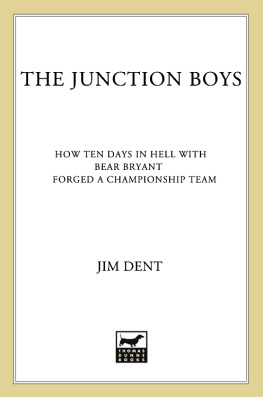
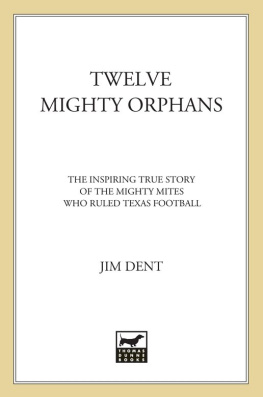


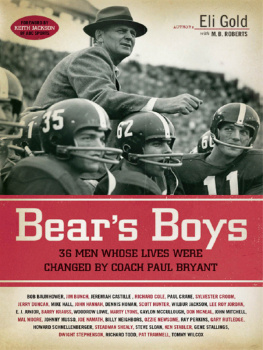
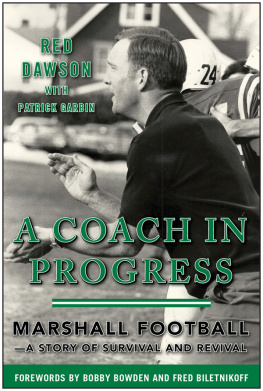
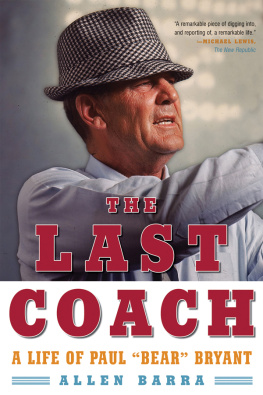
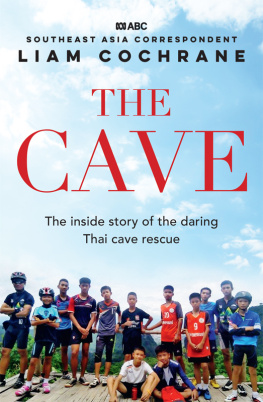
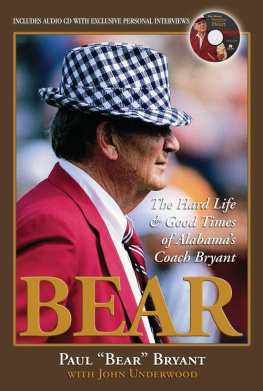

 New York
New York